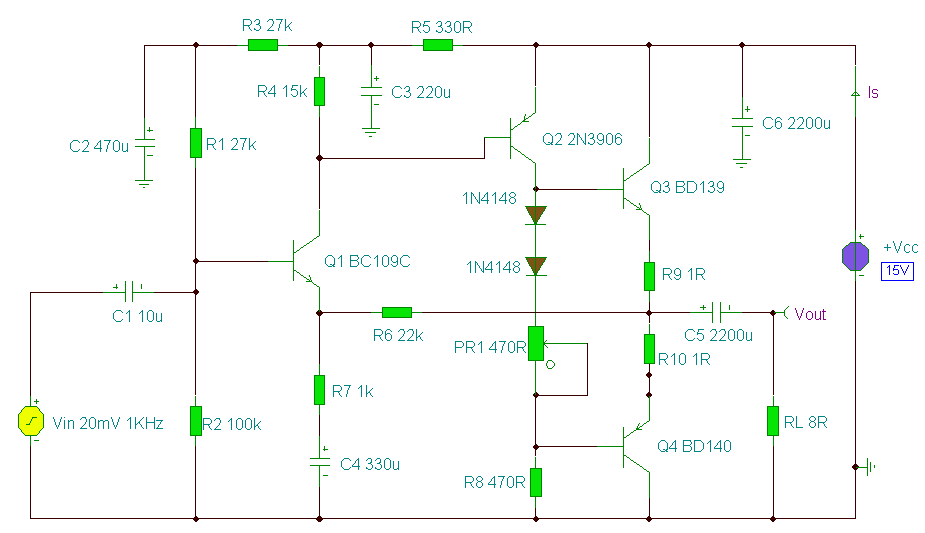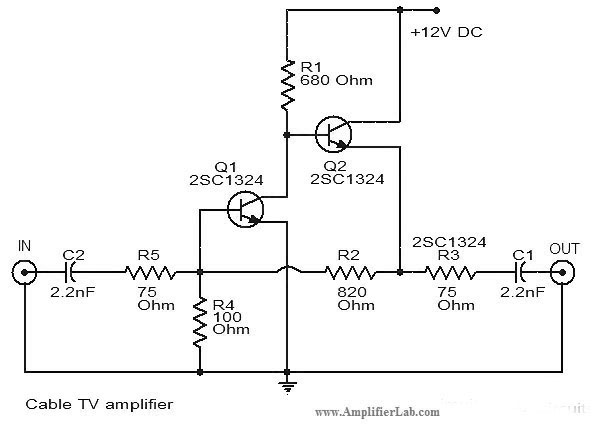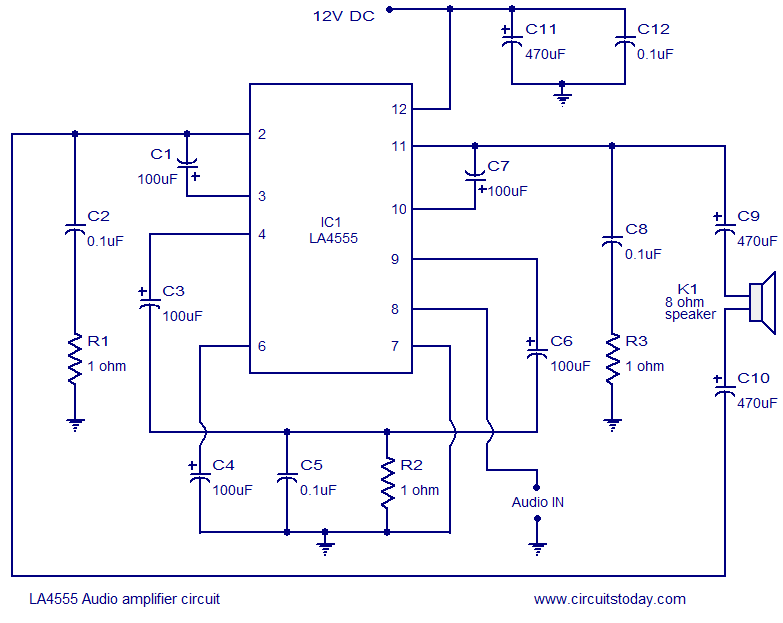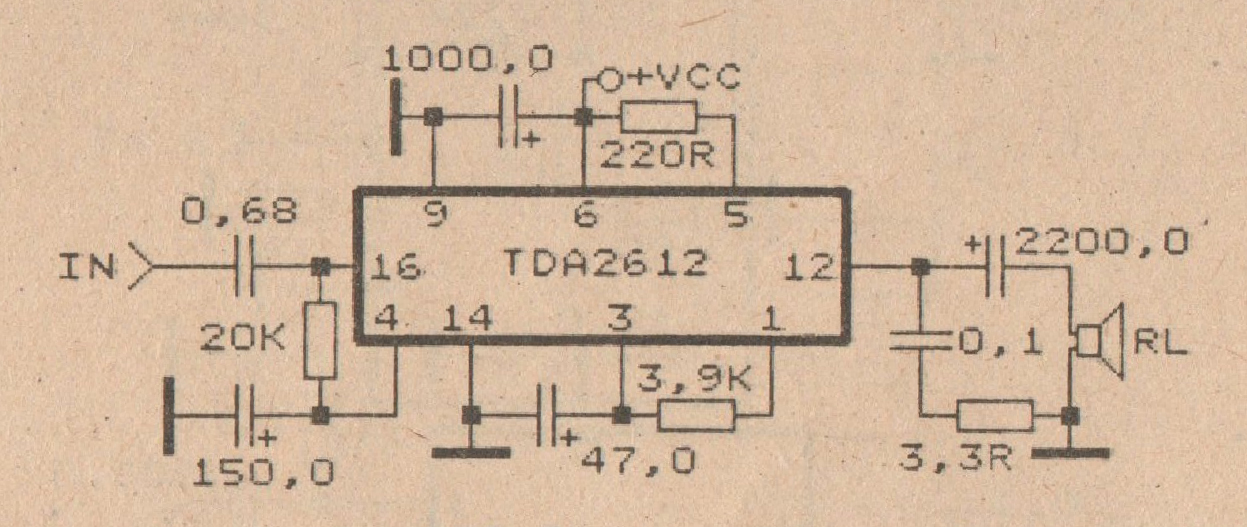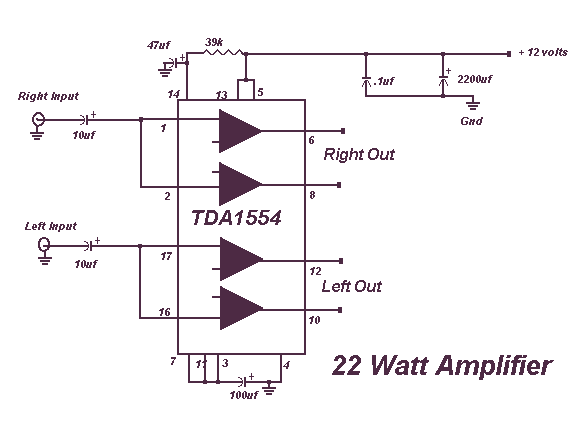
Headphone Amplifier
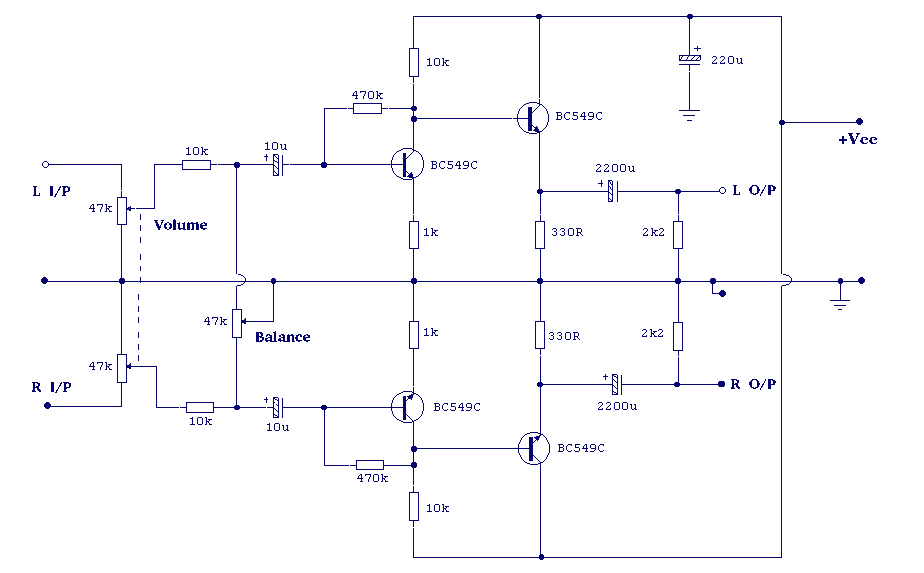
An amplifier to drive low to medium impedance headphones built using discrete components. Both halves of the circuit are identical. Both inputs have a DC path to ground via the input 47k control which should be a dual log type potentiometer. The balance control is a single 47k linear potentiometer, which at center adjustment prevents even attenuation to both left and right input signals.
The described amplifier is designed specifically for driving headphones that fall within the low to medium impedance range. This is achieved through the use of discrete components, which are individual electronic components as opposed to integrated circuits. This design choice allows for greater flexibility and customization of the circuit, as well as potential improvements in performance and sound quality.
The circuit is symmetrical, with both halves being identical. This ensures that the left and right channels of the audio signal are processed in exactly the same way, maintaining the stereo image and avoiding any potential imbalance or distortion.
The inputs of the circuit each have a DC path to ground. This is facilitated by the input control, a dual log type potentiometer with a resistance of 47k. This potentiometer acts as a voltage divider, allowing the user to adjust the level of the input signal. The use of a dual log type potentiometer ensures that the attenuation of the signal remains consistent across the entire range of the control, from minimum to maximum volume.
The balance control of the amplifier is a single 47k linear potentiometer. This control allows the user to adjust the relative levels of the left and right channels. When set to the center position, it provides even attenuation to both channels, ensuring that the stereo image is maintained. If adjusted away from the center, it can increase the level of one channel while decreasing the level of the other, allowing for manual adjustment of the stereo balance.
In conclusion, this amplifier circuit is a well-designed piece of audio equipment that provides high-quality sound reproduction for low to medium impedance headphones. Its use of discrete components and carefully chosen controls ensure a consistent and balanced audio output.An amplifier to drive low to medium impedance headphones built using discrete components. Both halves of the circuit are identical. Both inputs have a dc path to ground via the input 47k control which should be a dual log type potentiometer. The balance control is a single 47k linear potentiometer, which at center adjustment prevents even attenuation to both left and right input signals.
🔗 External reference
The described amplifier is designed specifically for driving headphones that fall within the low to medium impedance range. This is achieved through the use of discrete components, which are individual electronic components as opposed to integrated circuits. This design choice allows for greater flexibility and customization of the circuit, as well as potential improvements in performance and sound quality.
The circuit is symmetrical, with both halves being identical. This ensures that the left and right channels of the audio signal are processed in exactly the same way, maintaining the stereo image and avoiding any potential imbalance or distortion.
The inputs of the circuit each have a DC path to ground. This is facilitated by the input control, a dual log type potentiometer with a resistance of 47k. This potentiometer acts as a voltage divider, allowing the user to adjust the level of the input signal. The use of a dual log type potentiometer ensures that the attenuation of the signal remains consistent across the entire range of the control, from minimum to maximum volume.
The balance control of the amplifier is a single 47k linear potentiometer. This control allows the user to adjust the relative levels of the left and right channels. When set to the center position, it provides even attenuation to both channels, ensuring that the stereo image is maintained. If adjusted away from the center, it can increase the level of one channel while decreasing the level of the other, allowing for manual adjustment of the stereo balance.
In conclusion, this amplifier circuit is a well-designed piece of audio equipment that provides high-quality sound reproduction for low to medium impedance headphones. Its use of discrete components and carefully chosen controls ensure a consistent and balanced audio output.An amplifier to drive low to medium impedance headphones built using discrete components. Both halves of the circuit are identical. Both inputs have a dc path to ground via the input 47k control which should be a dual log type potentiometer. The balance control is a single 47k linear potentiometer, which at center adjustment prevents even attenuation to both left and right input signals.
🔗 External reference
